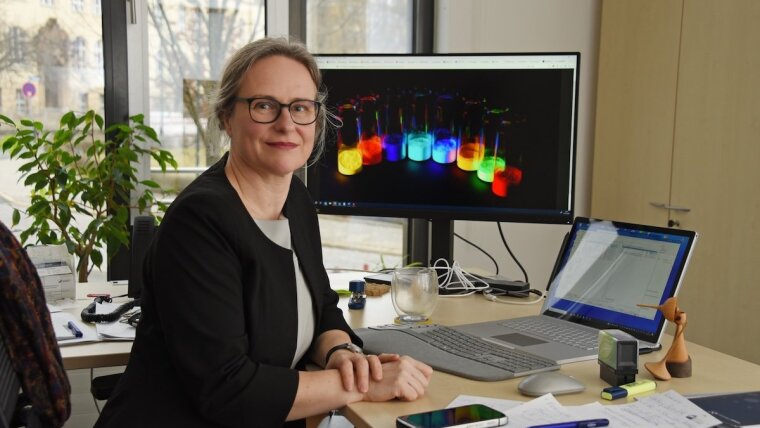
- Light
- Research
Published: | By: Marco Körner
Prof. Dr Birgit Weber of the Friedrich Schiller University Jena will coordinate a new Priority Programme funded by the German Research Foundation (DFG). As the DFG announced today, the funding for Programme 2491 “Interactive Switching of Spin States” has been approved. Up to 30 research groups nationwide may be funded within the framework of the programme. In addition, regular meetings among researchers in Jena, further training for the scientific next generation, and the organisation of international symposiums will be supported.
The programme’s objective is to explore and develop molecular components whose properties can be controlled by chemical or physical triggers. Such molecules are required for various applications in sensing and data processing – ranging from tumour detection to the storage of large amounts of data, to the control of quantum computers.
Haemoglobin sets the precedent
“An example of switchable molecules is the red blood pigment haemoglobin”, explains Prof. Weber. “The iron in haemoglobin can adopt various spin states, which are associated with different chemical properties – specifically, the capacity to bind oxygen or to release it.”
The spin states of metal complexes, including haemoglobin, are derived from quantum mechanics. The iron in haemoglobin has six electrons in its outermost electron shell. “There are a total of five spots that can accommodate up to ten electrons,” Weber continues. “Once this so-called shell is filled, additional electrons would move into a new shell.” In the case of haemoglobin iron, there are now two possibilities for how these six electrons can occupy the five available spots: four electrons each take up one spot, while the fifth spot is shared by two electrons. Then, these two electrons are said to be paired, while the other four are unpaired,” the chemist illustrates. “This scenario is referred to as a high-spin state.” The alternative, as Weber goes on, would be that all six electrons are paired, thus only occupying three of the five available places. “That would be a low-spin state,” says Weber. Both states are associated with different magnetic and spectroscopic properties and are thus measurable.
Chemical Measurement and Control
“Which scenario occurs depends on, for example, the chemical environment. It's different in an acidic medium than in an alkaline one,” she elaborates. “Temperature can also play a role.” In this way, information about the environment can be read from such molecules. “The reverse is also possible,” the scientist explains: “By switching between high-spin and low-spin states, for instance using light energy, the properties of the molecule can also be influenced.” This way, the substances can, for instance, become luminescent.
In the new priority programme, these processes will now be investigated for individual molecules. “This deep understanding is needed to predict the properties of these switches and to design corresponding systems,” Weber explains. “There is also still a lack of sufficient knowledge about the influence of carrier materials in which such switchable systems are embedded.” For this purpose, the switchable spin systems are to be investigated using ultrafast measurement methods, down to the femtosecond range.
The new priority programme brings together different areas of expertise from all over Germany. “I look forward to working with the many different teams and would like to thank again Prof. Dr Christian Bressler from the University of Hamburg and Jun.-Prof. Dr Manuel Gruber from the University of Duisburg-Essen, as well as the group from theoretical chemistry by Prof. Dr Vera Krewald from the TU Darmstadt and Prof. Dr Mario Ruben from KIT Karlsruhe, who helped with the application process”, says Weber. “I am sure that we will make some exciting discoveries together.”